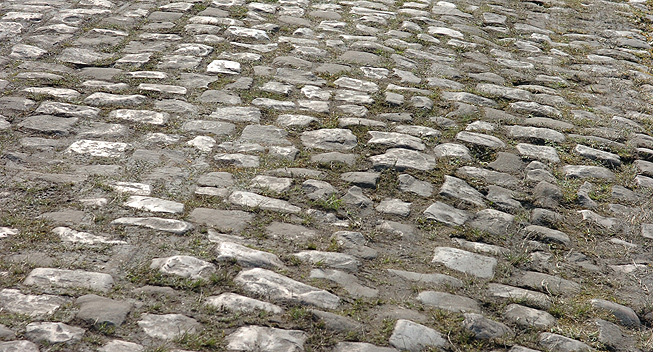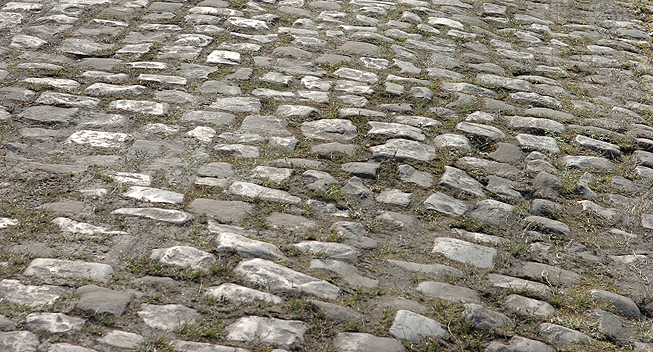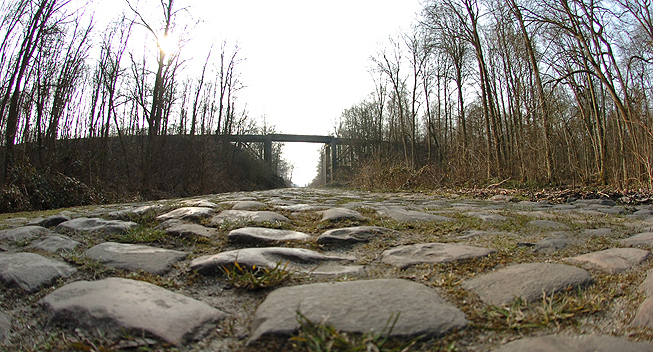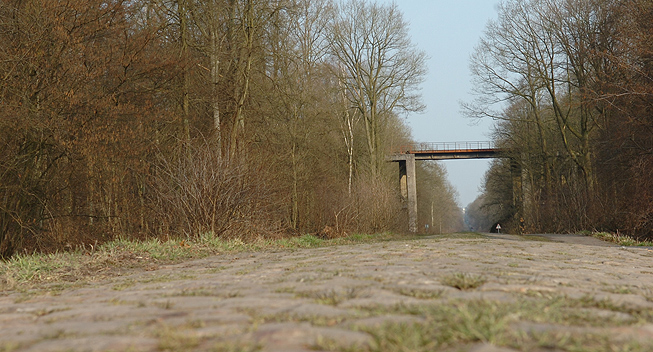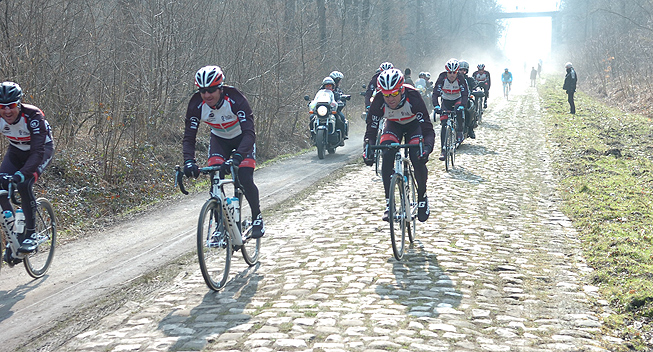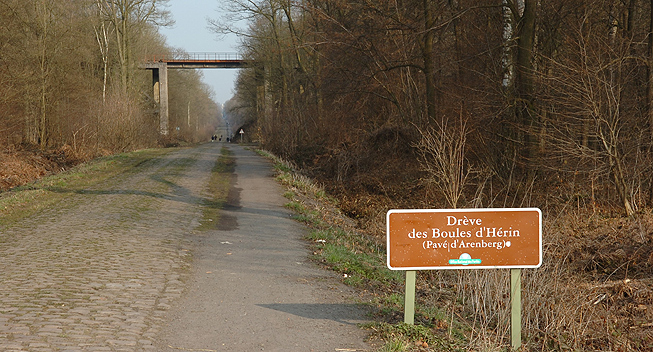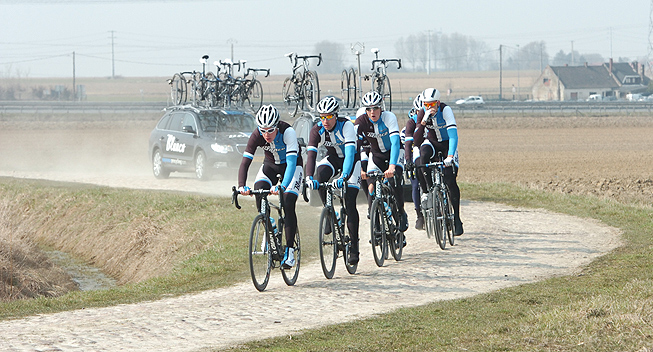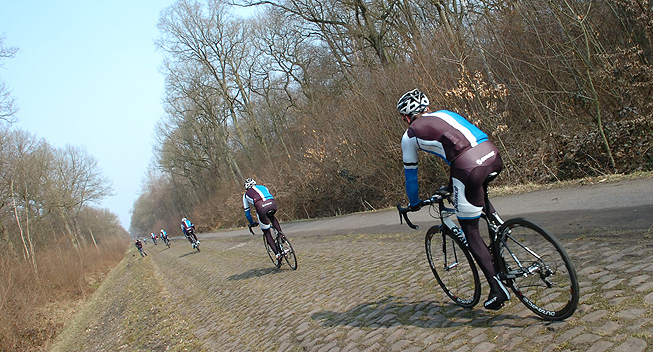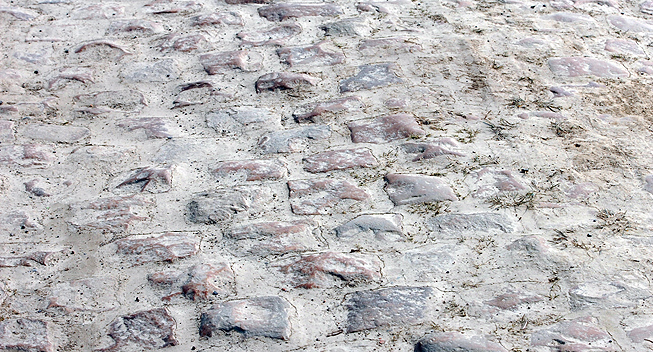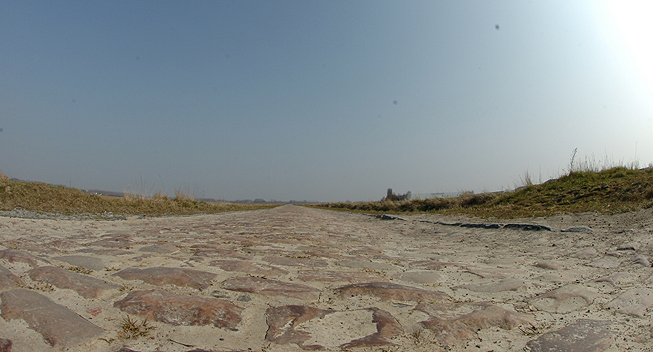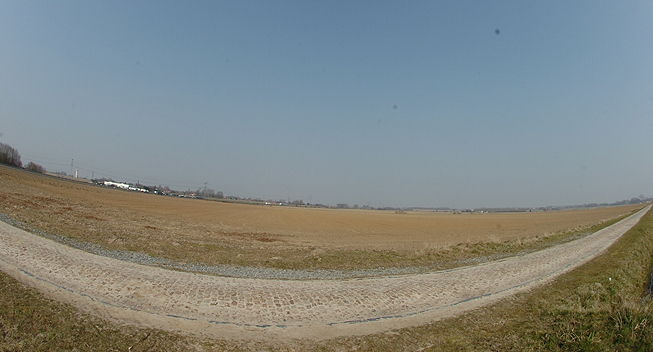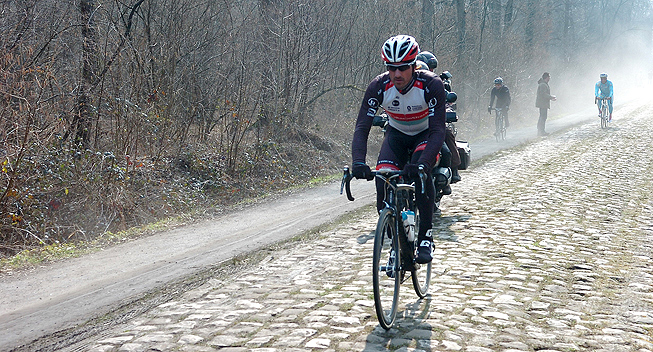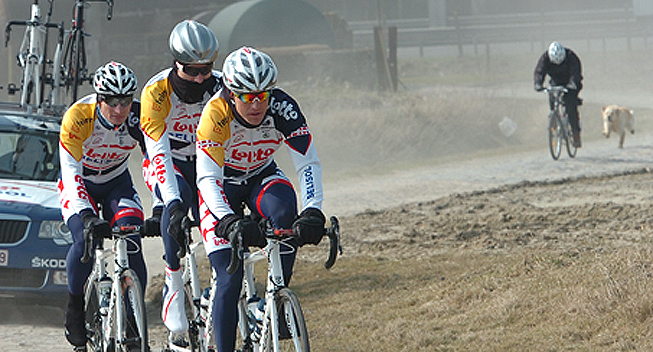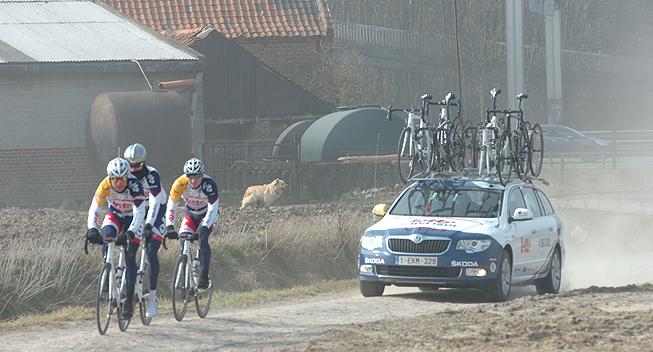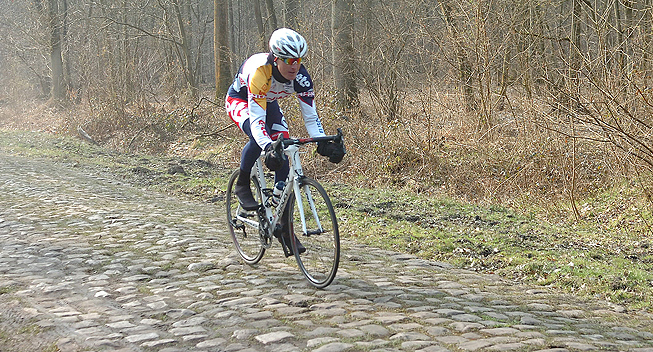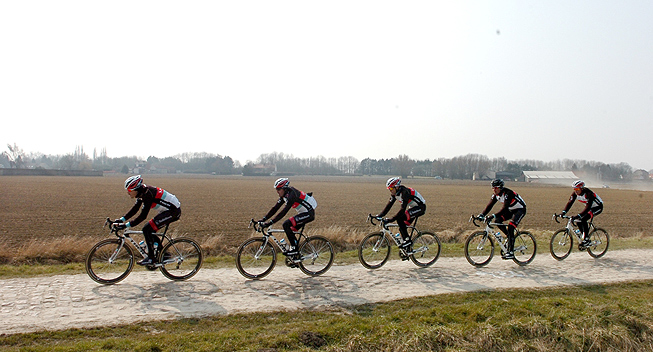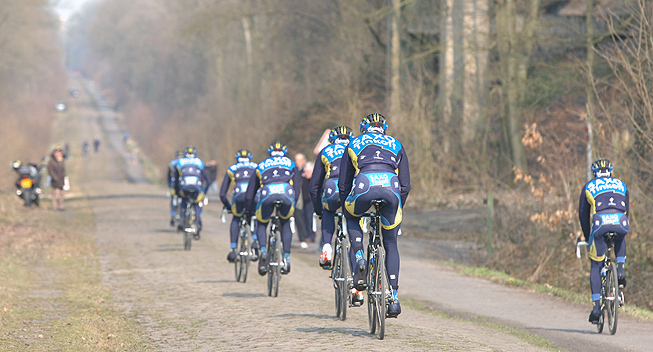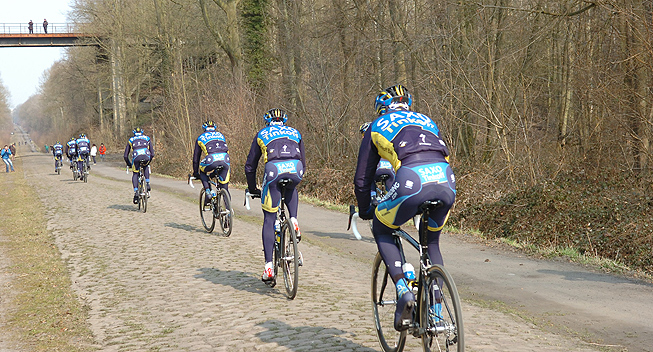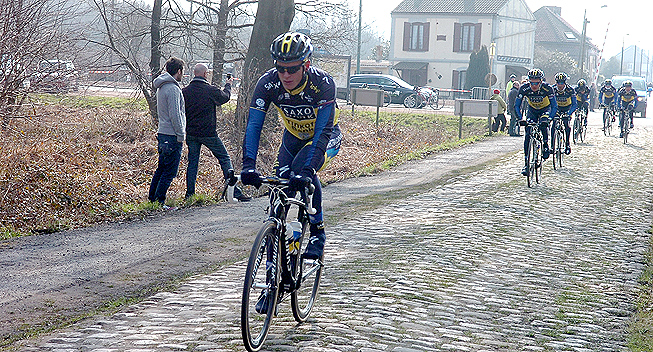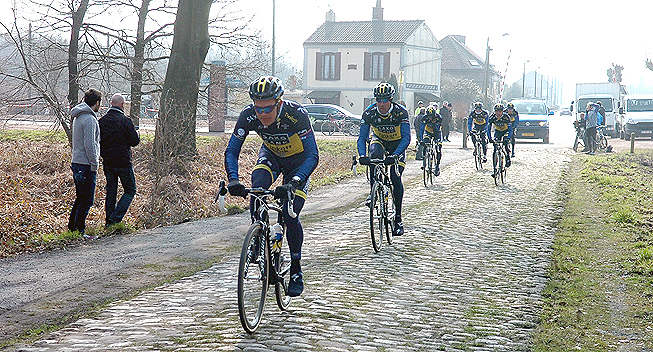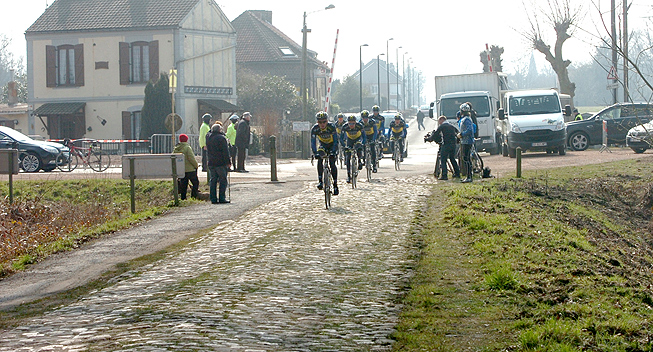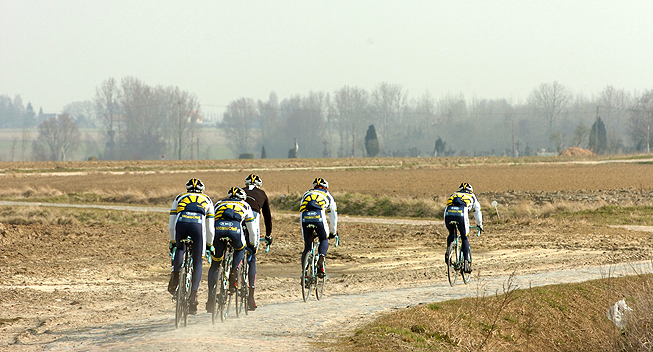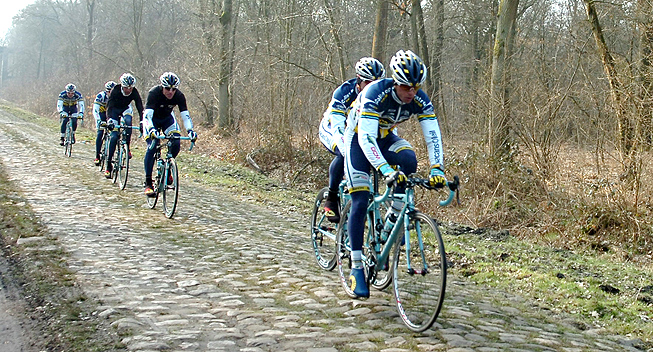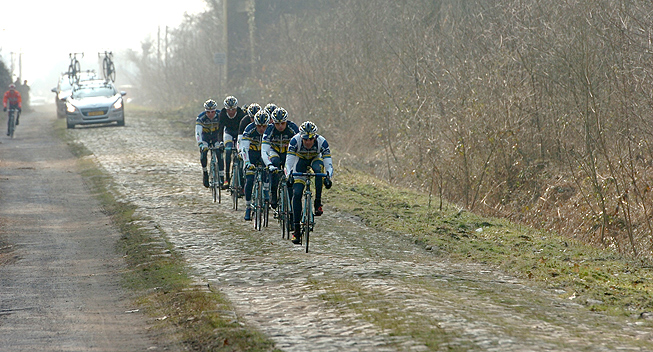One classic stands above the rest when it comes to its dramas, myths and legends: the Paris-Roubaix. On Sunday, it is once again time to enter the Hell of the North in a battle against cobbles, weather, fatigue and dust on the long run from Compiegne to Roubaix.
It is no coincidence that the Paris-Roubaix has been dubbed the queen of the classics. First held in 1896, the race has delivered some of the most iconic images of the merciless sport of cycling, and the number of broken dreams in the Roubaix velodrome have turned the famous cobblestone trophy into the most coveted and iconic classics symbol.
Apart from its history, what makes the Paris-Roubaix so significant in the world of cycling is its unique nature. While its fellow monuments (Milan-Sanremo, Tour of Flanders, Liege-Bastogne-Liege and Tour of Lombardy) can all be prepared by participation in similar events, the Paris-Roubaix stands out as the only event of its kind on the cycling calendar. The Milan-Sanremo may be seen as a longer version of a number of Italian one-day events, the Liege-Bastogne-Liege and the Tour of Lombardy are just the pinnacle of a number of races in the same regions, and the Tour of Flanders is preceded by a number of semi-classics taking in the same roads in the Flemish Ardennes. On the contrary, the paves in Northern France are used only once a year.
As a consequence, it is no surprise to see a number of riders who only stand out from the rest on this single day of racing. While the race has always been dominated by the usual crop of classics specialists, they suddenly have to battle a small handful of powerful domestiques who for once leave behind their usual selfless nature to battle the cycling giants. In the Roubaix velodrome, sheer power, brutal strength and phenomenal endurance are rewarded, and that is exactly the main attributes of some of the most highly-esteemed workers in the peloton. Johan Vansummeren's string of results on the French cobbles - capped off with his 2011 victory - is the most recent example of a tireless domestique to shine in the Hell of the North.
In a unique event, it is no surprise to see experience be the key to success. In no other race, pre-race knowledge of the challenges ahead is as important as it is in the queen of the classics, and the winners' list is littered with powerful veterans who have found their niche on the French cobbles. However, even the most experienced and strongest competitor gets nowhere without luck, and an untimely puncture or a dramatic crash has been the source of many broken dreams in Northern France.
What makes the Paris-Roubaix stand out is the fact that the selection is purely made by the rough surface and the riders' ability to handle the constant stress of tackling some of the most uncomfortable roads in Europe. In all other races, the main challenges are posed by the climbs or the weather, but the Hell of the North is different. The almost completely flat course would usually make any sprinter lick his lips in anticipation of a final bunch kick, but the Paris-Roubaix has the exact opposite nature. It is one of the most selective races on the calendar, and any kind of explosiveness or punch is unusable on the French paves. What counts is pure strength and an ability to just go on and on.
Last year's edition saw one of the most impressive demonstrations of power in recent history. In an attempt to replicate Fabian Cancellara's dominant 2010 performance, Tom Boonen accelerated off the front with 55km remaining, and even the collective might of a very strong Sky team was unable to stop the fabulous Belgian. He arrived solo in the Roubaix velodrome to cap off his dominant spring season with his fourth cobblestone trophy, thus equalling the number of victories by Mr. Paris-Roubaix, Roger de Vlaeminck. Unfortunately, his crash in the Tour of Flanders will prevent the Belgian champion from trying to take a unique fifth victory in Hell this year.
The course
The 254km course runs through one of the flattest parts of France, and there are no significant climbs. Instead, the obstacles are the 52,6km of paves to be tackled along the run from Compiegne to Roubaix. Divided into 27 sectors whose difficulty are all rated by the assignment of a number of stars (between 1 and 5), the cobbled stretches are mostly located in the latter part of the race and produce a constant elimination race where the number of remaining contenders dwindle as the number of remaining paves is reduced.
The race starts in the city of Compiegne north of Paris and heads in a northerly direction to reach the city of Roubaix just a few kilometres south of the French-Belgian border. The first pave sector does not occur until after 98,5km of racing, and the opening kilometres do not offer any significant challenges. However, they are often tackled at a frantic pace as team tactics play a crucial role in the Paris-Roubaix, and while the bigger teams try to put domestiques in the early escape, the rival teams close all non-favourable moves down. Hence, the early breakaway is often established late in the race, and a number of legs are already severely fatigued when the race finally calms down.
When the race hits the first pave sector after 98,5km of racing, the elimination starts. The strong teams gather near the front, and a number of formations will use the first 8 sectors to up the pace and put their rivals under pressure. It is a constant battle to stay near the front as they enter the sectors, and it would be very unusual not to see any crashes in this phase of the race.
The battle intensifies dramatically when the riders approach the Haveluy sector after 149,5km. Positioning is key at this point, and the peloton speeds along at a rapid pace while the strongest teams use the pave to eliminate riders.
Just 8,5km later, the riders will tackle the most iconic - and one of the most difficult - sectors: the Trouée d'Arenberg. The run-in to this nasty piece of road is one long sprint as the race favourites all want to enter the sector in prime position, and crashes are almost certain to occur. As soon as they hit the sector, the favourites put in their first serious accelerations and a much-reduced front group exit the pave.
From then on, the sectors follow in quick succession, and every time they exit a cobbled stretch the front group has been reduced a little bit further. Attacks can happen anywhere from now on, and dangerous outsiders often use a moment of hesitation on the paved roads to take off. Meanwhile, the favourites often use the paves to accelerate and eliminate their rivals while they hope to be surrounded by teammates as long as possible to be able to close down any dangerous attack.
History proves that it is almost impossible to say where the decisive attacks are put in, but a key point is the Mons-en-Pevele sector which occurs with 49,5km remaining. The 3000m long stretch is one of the most difficult and is an important battleground in the race. When the riders exit this cobbled stretch, a number of easier paves follow before the final kicks off with the Cysoing a Bourghelles sector with 29,5km still to race. The final opportunity for selection occurs with 18km remaining when the riders hit the famous Carrefour de l'Arbre sector which has been the scene of some of the most dramatic racing in the history of the race.
From then on, it is a fast run-in to the finish in Roubaix, and it will be a question of trying to maintain any gap obtained on the Carrefour de l'Arbre. The three remaining sectors do not pose any major challenge, but a small hill inside the final 10km has often done plenty of damage to some very tired legs. The race finishes with 1,5 lap of the famous Roubaix velodrome which has been the scene of both majestic celebration of solo victories or dramatic sprints with some very unexpected outcomes.
Compared to last year, the course has been slightly changed. The race is 3,5km shorter, but the riders will tackle more cobblestones. The first selection will occur earlier than usual as the key sector, the Trouee d'Arenberg, will be tackled 14km earlier than last year, and shortly after the riders will hit the Pont Gibus sector which is back after a 5-year absence. Finally, the Hornaing sector - which at 3700m is the longest in the race - will make its return, and many riders will surely remember it as one of the paves tackled in the 2010 edition of the Tour de France.
The weather
The weather has the potential to completely change the nature of the race. In wet conditions, the event becomes a mudfest with some very dirty and unrecognizable faces entering the Roubaix velodrome after an epic day of racing. On the contrary, the riders will have to tackle an unpleasant amount of dust if the race day has been preceded by a dry period. And as always, the wind has the potential to dramatically change the outcome of a race.
We have not had a mudfest for a number of years, and it seems that we may have to wait at least another year to once again see those empty and worn-out faces that can only be produced by the hardest weather conditions. Instead, we should be in for another dust version as Roubaix has experienced dry conditions during the last couple of days.
Those conditions are expected to continue all the way through Sunday, and the riders will probably tackle the course on a cloudy day with temperatures just below the 10 degrees mark. The wind is unlikely to influence the race as there will be a light breeze from an easterly direction. Hence, everything points to a cold, but rather pleasant day of racing, and it will be up to the paves to produce the selection among the favourites.
The favourites
There is one and only one favourite for this year's Paris-Roubaix. Fabian Cancellara (Radioshack) proved his amazing strength by crushing the opposition in the E3 and the Tour of Flanders, and the question dominating all pre-race speculation and all tactical considerations among the rival teams is how Cancellara can be beaten. Only Peter Sagan (Cannondale) was able to pose any realistic threat to the powerful Swiss last Sunday and with Sagan absent from the start line in Compiegne, Cancellara's superiority to his rivals makes it hard to imagine a realistic scenario with another winner than the Swiss.
The route in Roubaix favours the quadruple world champion even more than the one in Flanders. While he is not the most gifted climber of the peloton, his main attributes are his power, strength and ability to handle the cobbles. Last Sunday, he suffered on the paved climbs, but was much more comfortable on the cobbled hellingen. He simply seems to have a superior natural ability to handle the rough surface and thus is perfectly suited to a race in which the selection is only made by the paves.
Cancellara has been in the position of being the overwhelming favourite before. In 2010, he also arrived with victories in the E3 and Tour of Flanders in his pocket, and he demolished the opposition by a long-distance solo attack.
However, he was in a similar position prior to the 2011 edition in which he failed to live up to expectations. As it is the case this year, all pre-race discussion was focused on possible ways to beat the Swiss, but in the end he was caught out in a tactical battle. A dangerous break containing eventual winner Johan Vansummeren went up the road, and Cancellara was never able to bridge the gap and had to settle for second.
His defeat had two main reasons. First of all, he was surrounded by a weak Leopard-Trek team which failed to close the gap to the early break and left their captain isolated in a very uncomfortable situation early in the race. Secondly, the Swiss was unable to drop a very strong Thor Hushovd on the paves and with the Norwegian being the superior sprinter, Cancellara did not want to tow the then-Garmin rider all the way to the velodrome in Roubaix. As a consequence, he did never bridge the gap to the front group.
Rival teams may find cause for optimism in the 2011 scenario. However, the two main reasons for his defeat have drastically changed. For once, the Swiss seems to be surrounded by a very strong team which single-handedly managed to keep control of the attacks in the Tour of Flanders. With Gregory Rast as his trusted key domestique in the race final and Stijn Devolder and Hayden Roulston both going strong, Cancellara will be confident that he is well-supported on Sunday.
Secondly, he seems to face weaker competition than he did in 2011. The two most naturally gifted pave riders could very well be the BMC duo of Hushovd and Taylor Phinney. While the latter has limited experience in the professional version of the race, the former still seems to search for his best form. We may face a situation like in 2010 where nobody is able to follow Cancellara when he puts down the hammer on one of the cobbled sections towards the end of the race.
Cancellara's main rival should once again be Hushovd. The Norwegian had a terrible, illness-plagued year in 2012, and his Roubaix challenge was destroyed by a crash. Indications early in the year was that he was back to his best, and he shone in the epic penultimate stage in the Tirreno-Adriatico. Mechanical failure forced him out of contention in the Milan-Sanremo, he abandoned the Tour of Flanders due to breathing problems and he was never really in contention in the Belgian races. However, the former world champion has never been able to compete with the best in the Flemish events where he struggles to stay in contention on the climbs. As opposed to this, the course in the Paris-Roubaix suits the Norwegian down to the ground and he gets maximal benefit from his power, strength and natural ability to handle the cobbles.
Hushovd's main tactical advantage is his strong sprint. While Cancellara needs to drop the Norwegian, the BMC rider "just" has to stay in the Radioshack captain's wheel. Furthermore, he is surrounded by an extremely strong team which could benefit from a numerical advantage in the latter part of the race. If Hushovd is back to his best, he could be the one to challenge Cancellara and finally take home the victory in his dream race.
Another great challenger is Sylvain Chavanel (Omega Pharma-Quick Step) who will try to salvage the classics campaign of his Belgian super team in the absence of Tom Boonen. People may be surprised to realize that the Frenchman has only been in the top 10 in Roubaix once (he was 8th in 2009). However, no rider has been hit by the same incredible run of bad luck as the former French champion, and the main reason for his lack of results in the Roubaix velodrome has been an amazing number of crashes.
Nonetheless, Chavanel sees the queen of the classics as even more suited to his characteristics than the Tour of Flanders, and there is no doubt that the Frenchman is in blistering condition at the moment. All the way back from Paris-Nice in early March, he has been a main animator in his races, and it was impressive to see his strength, calm and attention in his dominant performance in the Driedaagse van de Panne. In Flanders, he and Sebastian Langeveld (Orica-GreenEdge) were the best of the rest behind the duo of Cancellara and Sagan, and if he has been able to maintain his condition, he could be the one to exploit any hesitation from Cancellara to go off the front. He spearheads a strong team with a number of options, and like BMC he may be able to benefit tactically from a numerical advantage in the latter part of the race.
One of the most open questions prior to this year's Paris-Roubaix is related to Taylor Phinney (BMC). There is little doubt that he has the potential to be a dominant factor in future editions of the cobbled classic, but 2013 may be just a tad too early for the powerful American. He is a double winner of the U23 version of the race, and he impressed in his debut among the professionals last year. He worked hard in the early part of the race and despite his impressive workload, he fought on to finish 15th in the Roubaix velodrome.
Like team captain Hushovd, the Paris-Roubaix is the dream race of the former track world champion, and the race is perfectly suited to his characteristics. He is an incarnation of power and strength, and his effort last year, his 4th place in the Olympic road race and 7th in Milan-Sanremo shows that he is able to handle the distance. For the first time in his professional career he has had a perfect early part of the season and except for a minor knee injury which forced him to miss the Tour of Flanders, he has had no problems in his build-up. Furthermore, he has matured immensely since this time last year, and he has benefited greatly from his participation in last year's Giro.
The lack of results during the last couple of weeks may raise further questions over his condition. However, the Flemish hills do not suit him perfectly, and his performance in Sanremo clearly shows that he has done his homework during the winter. It will be interesting to see whether 2013 is the year in which a coming Roubaix star finally breaks through on the paves.
Lars Boom (Blanco) has been progressing in Paris-Roubaix during the last couple of years. After ending up 12th in 2011, he was clearly one of the strongest in the latter part of the race last year, and his final 6th place did not reflect his strength. Furthermore, he has been the one to make the most notable accelerations on the Arenberg pave in the last two editions and this is just another confirmation of his natural ability in the race.
He has struggled a bit in the early part of his spring campaign, and there was plenty of frustration in the Blanco camp after the E3 and Gent-Wevelgem. However, Boom was much better in the Tour of Flanders where he finished in the group sprinting for 4th, and the concerns had changed to optimism after last Sunday's race. Last year, he lined up on the start line in Compiegne with a much worse performance in Flanders behind him, and he ended up being one of the key protagonists in the race. Like Hushovd and Phinney, he is another rider not perfectly suited to the Flemish races, but in Roubaix his strength and power are maximally rewarded.
Apart from Boonen and Cancellara, the most consistent performer in Roubaix is Juan Antonio Flecha (Vacansoleil). Apart from a disappointing 12th place in 2008, the Spaniard has been in the top 10 every year since 2005 and in a race as unpredictable as the cobbled classic, this is a testament to an immense talent to handle the cobbles. Last year, he lined up in Compiegne with only the Tour of Flanders and the Scheldeprijs in his legs after an injury forced him to miss all of the racing in March. Nonetheless, he came tantalizingly close to a 4th podium result as he was only held off by Sebastien Turgot and Alessandro Ballan in the sprint for 2nd.
This year his build-up has been much smoother. After a strong run of form in the Tirreno-Adriatico, a cold suffered in the epic Milan-Sanremo made him struggle in the Dwars door Vlaanderen. Since then he has progressed constantly through the E3, Gent-Wevelgem and Tour of Flanders, and last Sunday he was one of the strongest when Cancellara and Sagan accelerated off the front on the Kwaremont despite a prolonged chase to get back after an untimely mechanical on the penultimate passage of the Paterberg. He is another one much better suited to Roubaix than Flanders, and except for Cancellara he is the most sure top 10 performer in Sunday's race. Whether it will be enough to finally take that elusive Roubaix victory is another question, and it will certainly require him to handle his two usual weak points: his lack of a powerful sprint and an unnecessary waste of energy early in the race.
A dangerous dark horse is John Degenkolb (Argos-Shimano). After struggling in the Milan-Sanremo, the E3 and Gent-Wevelgem - maybe due to a muscle injury which forced him to abandon the Tirreno-Adriatico - the form was suddenly back last Sunday in Flanders where he seemed to be totally at ease in the front group on most of the day's climbs. The Paris-Roubaix is maybe the classic which suits the powerful German best, and he was an impressive 19th in his 2011 debut.
Last year, he lined up after a number of strong performances in Sanremo and Flanders, but his form was on the decline, and he struggled throughout the race to end 63rd. This year the situation is the complete opposite. His form is on the rise, and if he is even stronger than last Sunday, he will be a danger man. Like Hushovd, he has the very strong weapon of a powerful sprint, and his competitors will have to drop him before they enter the velodrome in Roubaix.
Finally, two further riders deserve a mention. 2011 champion Johan Vansummeren (Garmin-Sharp) seems to be going stronger than ever. He has never been a protagonist in the Flemish races, and nonetheless he is always in the mix in Roubaix. Last Sunday, he suddenly managed to feature prominently in the Tour of Flanders where he finished in the group sprinting for 4th. With his best ever performance in Flanders behind him, he should once again feature in the pointy end of the race in Roubaix.
Sebastian Langeveld (Orica-GreenEdge) and Chavanel were the strongest of the rest behind Cancellara and Sagan in both Flanders and E3, and there is no doubt that the Dutchman is one of the best riders right now. However, he is a rider more suited to the climbs of Flanders than the paves of Northern France, and he has never really been in the mix in Roubaix. Nonetheless, his strong run of form marks him out as a contender, and it will be interesting to see if the Orica-GreenEdge captain finally manages to find the key to success in the queen of the classics.
***** Fabian Cancellara
**** Thor Hushovd, Sylvain Chavanel
*** Taylor Phinney, Lars Boom, Juan Antonio Flecha, John Degenkolb
** Johan Vansummeren, Stijn Vandenbergh, Sebastian Langeveld, Mathew Hayman, Bjorn Leukemans, Geraint Thomas, Sebastien Turgot
* Sep Vanmarcke, Marcus Burghardt, Daniel Oss, Matthieu Ladagnous, Heinrich Haussler, Alexander Kristoff, Luca Paolini, Jurgen Roelandts, Edvald Boasson Hagen
| 23.07 - 28.07: Le Tour de Femina |
| 24.07 - 28.07: Tour Alsace |
| 25.07 - 28.07: Princess Anna Vasa Tour |
| 25.07 - 28.07: Czech Tour |
| 28.07: Puchar MON |
| 28.07: Gran Premio Sportivi Loria |
| 27.07 - 29.07: Kreiz Breizh Elites |
| 30.07: Kreiz Breizh Elites Féminin |
| 31.07: Trofee van Vlaanderen |
| 03.08: Olympic games - Men |
| Sergio PÉREZ 45 years | today |
| Kai Chun WONG 33 years | today |
| Julien BERARD 37 years | today |
| Liam FLANAGAN 24 years | today |
| Jiaxi XIAO 25 years | today |
© CyclingQuotes.com

